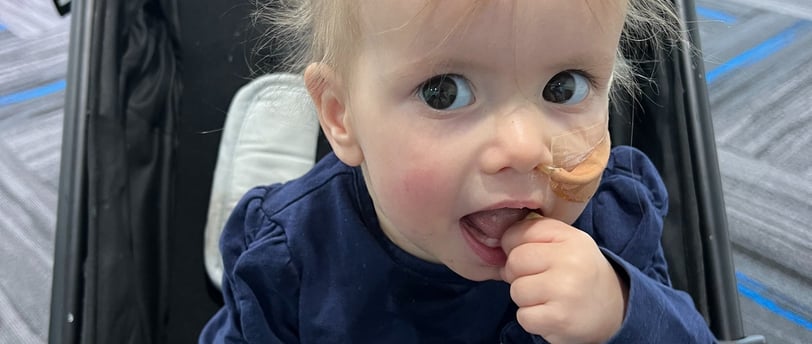What to expect when Tube Feeding
Navigating the daily routine of caring for a nasogastric tube-fed child can be overwhelming. In this blog post, I share a detailed, personal account of what a typical day looks like while managing my daughter’s tube feeding schedule. From breakfast preparations to the challenges of balancing oral and tube feeding, every aspect of our routine is carefully planned to support her growth. Whether you’re a parent facing a similar journey or someone looking to understand the realities of tube feeding, this post provides practical insights, tips, and encouragement. Discover how we managed feeding times, handled reflux, and found comfort in the little moments amidst the challenges.
10/12/20243 min read


What a Day Looks Like for a Nasogastric Tube-Fed Child
Over time, as we adjusted to our tube-feeding routine, we became acutely aware that feeding Averley would be a full-time job. Since she could safely eat orally, we prioritised food consumption. Our primary goal was to feed and grow her, as she was severely underweight. However, it was challenging to time and plan her feeds, especially when leaving the house. Going anywhere required careful planning—finding locations with hygienic facilities and access to hot water was a must.
Here's a glimpse into what a typical day looked like for us:
6:00 AM – Wake Up & Breastfeed
Our day would start with a breastfeeding session, followed by breakfast.
6:30–7:00 AM – Breakfast
Breakfast was Weet-Bix warmed with full cream milk, often with fruit purée or yoghurt. It took about 30 minutes for Averley to eat, and afterwards, we would offer her as much formula as she could drink. While she ate, we would warm the formula, aiming to feed her orally first before transitioning to the tube. Initially, she started with 20ml of formula, which quickly increased to 150ml. Using a 20ml syringe for gravity feeding, we were constantly topping it up. Keeping her still for the 30-minute syringe feed was challenging, and we had to wait 30–60 minutes between oral and tube feeds.
8:30 AM – School Time
After breakfast, we’d pack the car and drop the older two children at school and preschool. The preschoolers loved Averley and were always curious about the tube on her face. Their innocence and curiosity were heartwarming. After school drop-off, we’d either run errands or head home.
10:00 AM – Breastfeed
Around mid-morning, it was time for another breastfeeding session.
11:30 AM – Lunchtime
Lunch usually consisted of a homemade purée or, if needed, a store-bought pouch. We’d follow up with yoghurt or custard. As her formula intake increased, her oral intake decreased, which became a delicate balance. We were always wary of overfilling her, as tube feeding increased her chances of reflux and vomiting. Overfilling could lead to extreme vomiting episodes, which were distressing for everyone.
12:30–1:00 PM – Nap Time (Sort of)
Feeding times took roughly 90 minutes, so we aimed for a nap after lunch. Averley wasn’t much of a day napper unless she was on me, and I never discouraged this. Knowing she was my last baby, I was happy to let her nap on me when possible. However, playtime and developmental activities often took a back seat to feeding. This was difficult because I worried about her falling behind in other areas. On days with long drives for therapy appointments, I would try to time her naps in the car.
3:30 PM – School Pickup & Afternoon Snack
Once school was out, it was back in the car to pick up the older girls. Averley’s afternoon snack was usually another breastfeed or tube feed. As her journey with tube feeding progressed, she gradually gave up breastfeeding because she was so full from the feeds. We juggled after-school activities with tube feeds, carrying everything with us wherever we went.
6:00 PM – Dinner Time
By this time, we were exhausted, but we always tried to have dinner together as a family. For Averley, this meant pureed versions of our meals or finger foods. We encouraged her to take small bites from our plates. After dinner, we gave her the last tube feed of the day. In this window, we’d also make time for a bath, some playtime, and—if needed—a tape change (I'll write another post about taping!).
7:30 PM – Bedtime
One of my favourite times of the day was bedtime. The tube feeding was done, and we could finally relax and cuddle. Averley still had a night-time breastfeed, which was a comforting end to the day. After rocking her to sleep, I’d place her in the cot, and she’d mostly sleep well through the night, only needing occasional settling.
This schedule continued for eight months, and it was an incredibly stressful period. While our experience may not mirror everyone’s, managing a tube-fed child can be overwhelming. If you’re ever in a similar situation, please don’t hesitate to seek support—it’s essential for your well-being.
